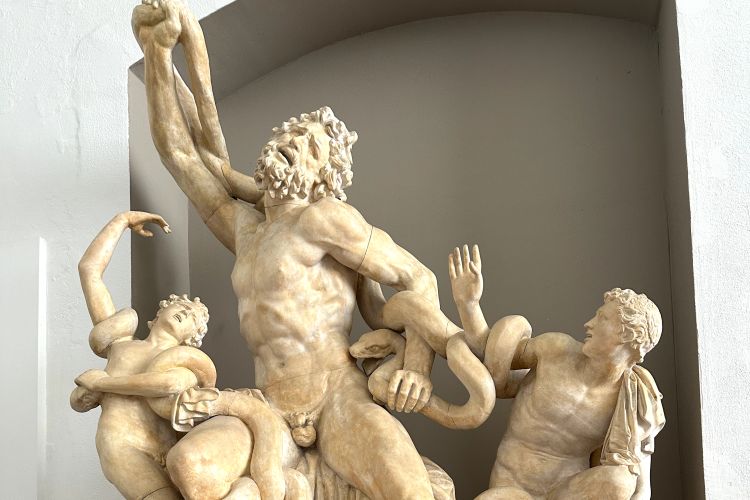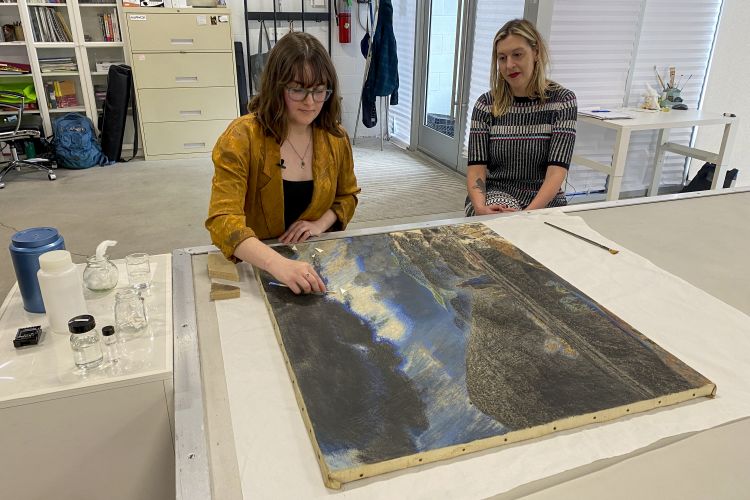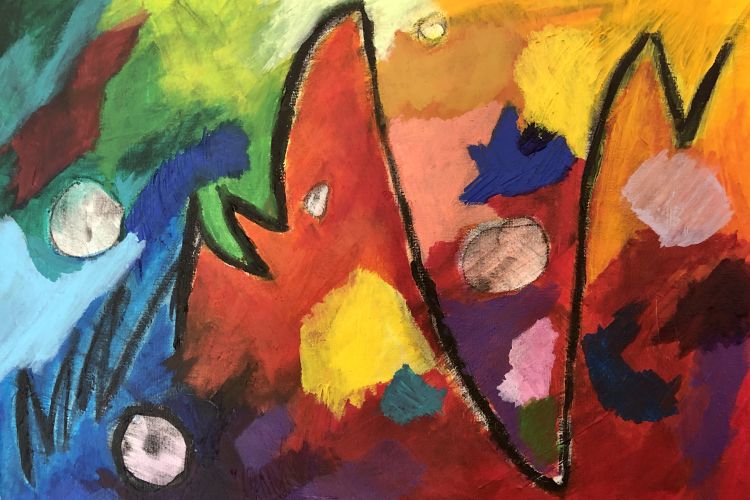STORIES FROM PAFA
Summer Exhibition Explores Access for Women Artists
Space is something we all occupy. But how much space and where that space is, greatly varies.
Infinite Spaces, PAFA’s summer exhibition, explores how artists have engaged space throughout the history of American art, from the eighteenth century to the present day. The exhibition, on display June 28th through September 9th, takes visitors across PAFA’s campus and asks them to question the spaces and opportunities they are afforded.
“Space itself is something that’s kind of given to people, but there are certain access issues with space,” said curatorial assistant Mechella Yezernitskaya. “We are in a time when we’re talking about space and who has access to it.”
For some artists, their work is deeply affected by the spaces they can and cannot enter.
The recently acquired Looking into the Hand Mirror #3 by PAFA alumna Mary Cassatt highlights the space Cassatt was confined to in her career. When Cassatt studied at PAFA and with masters in Europe, she did not have access to nude models like her male counterparts.
Her inability to infiltrate those spaces greatly impacted the work she was able to make.
“She got most of her inspiration from inside the home. She never married herself, but she would be looking at her sisters and her friends and their children and that was her main source of inspiration,” said curatorial assistant Natalia Vierya. “It is this very idealized, Madonna and child sort of vibe that she’s always sort of pulling from.”
The etching from Cassatt is in direct contrast with a series of prints by Judy Gelles in Infinite Spaces. The works are also a new acquisition for PAFA and show a much less romanticized image of motherhood.
“They more show the daily struggle of life with children,” Vierya said. “There is a bit of feminist critique in there as well. How do you represent yourself both as a working artist and a mother at the same time?”
Gelles’ contemporary Miriam Schapiro used her work to combat the idea that women are only art objects and not art created.
“To combat this antiquated viewpoint, and to show the evolution of American society in terms of its ability to accept women as capable of far more than was often available to them, works such as Miriam Schapiro’s Anonymous Was a Woman with its jarring statement “take a seat,” bring to light the unfair and repressive constructions endured by women throughout history,” writes exhibitions intern Liam Bailey on PAFA's Infinite Spaces Tumblr.
Infinite Spaces also showcases rarely seen objects from PAFA’s historic collection. Highlighting another space that hasn’t always been equally available to all artists: gallery walls.
Gretchen Woodman Rogers’ lithograph A woman reading has been in PAFA’s collection for decades, but has never been shown in the museum.
“I think it came straight out of someone’s studio, it says source unknown but it seems like it came out of someone’s studio because it was covered in charcoal and dirt,” Vierya said. “We have no idea how long we’ve had it, probably since the 19th century.”
The print is currently being conserved so it can be exhibited.
“She was a female artist working in the Boston School of Painting along with other male artists who are much better represented in our collection, like William Paxton and Edmund Tarbell,” Vierya said. “Being a female artist, she’s often overshadowed by these sort of ‘big boys with big allowances’ kind of people.”
For PAFA, Infinite Spaces is the next step in the museum's commitment to highlighting the work of women artists.
“Women have had a voice in the studios and galleries at PAFA for more than 100 years,” said PAFA museum director Brooke Davis Anderson. “And in the past 10 years, we have been deliberative about providing more opportunities for female artists to exhibit their work in our exhibitions, and have been more strategic in building a permanent collection that is more equitable to women artists.”






